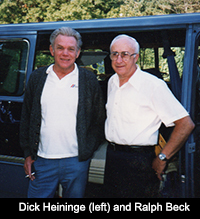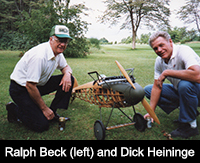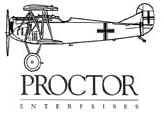|
Baron Manfred von
Richthofen scored 60 of his 80 victories, not in a red Fokker
triplane, but in an Albatros. This fact alone could settle
most arguments about the greatness of this airplane, but there is
much more.
The Albatros was the
only fighter to be manufactured throughout the entire war, the
first arriving at the front in August 1916 as the DI. The DI
and subsequent models helped regain air superiority for the
Germans in 1917. The DV and DVa series were to see the
Armistice in 1918 with more than 2,500 ordered. It is safe
to say that nearly every German ace scored some or all of his
victories in an Albatros.
For the staff at
Proctor Enterprises, the Albatros DVa represents the most
ambitious undertaking to date. We have been extremely
fortunate to have South Australia's Bob Waugh assist us with the
project. Bob is considered by many to be the foremost
authority on Albatros and Pfalz aircraft in the world.
 Once again, Ralph Beck
rose to the challenge of drawing yet another set of beautiful
plans. Working together with Dick Heininge and Mark Heininge, over 2,000 hours of design and drafting time have
made this plan set a work of art. Along with the plans, a
53-page, 58-photo construction manual takes you step by step
through the construction. Once again, Ralph Beck
rose to the challenge of drawing yet another set of beautiful
plans. Working together with Dick Heininge and Mark Heininge, over 2,000 hours of design and drafting time have
made this plan set a work of art. Along with the plans, a
53-page, 58-photo construction manual takes you step by step
through the construction.
Only the finest woods
and veneers are used, hand-selected for weight, color, and
grain. High-grade round reed is used on all control surface
outlines and wing tips, pre-formed and ready for assembly.
The hundreds of brass and aluminum machined parts must be seen to
be appreciated.
The construction of
the semi-monocoque fuselage is scale, with 3-ply, 1/64" Finland
Birch plywood skin acting as a structural member. All
bulkhead and longerons are hand finished and ready for
assembly. The landing gear is formed aluminum tubing, jig
drilled and ready to be bolted to the fuselage.
This attention to
detail has been carried to the flying surfaces as well. The
wing spars are fully finished, cut to length, beveled and jig
drilled for the strut-mounting brackets. The 1/32"
plywood ribs are CNC router cut and feature scale lightening holes
and capstrips. The top wing carries the engine radiator that
has been carefully duplicated, right down to the operable
shutters. Wing rigging and control cables are used as in the
full-size airplane, with operable turnbuckles used for tensioning.
The 180 H.P. Mercedes
engine used in the Albatros has been faithfully reproduced in
brass, aluminum and styrene. It lacks nothing but a thick,
billowing cloud of smoke as it explodes to life.
Building Proctor's
Albatros DVa is like taking a trip back in time. This was
our experience as the project unfolded. The hundreds of research
photos became three dimensional, the pilots' faces came
alive. The Mercedes engine is running... Ready to
climb aboard?
Click
here to see
more Albatros photos in the Photo Gallery
|


Click
here to see
more Albatros photos in the Photo Gallery
|
KIT
SPECIFICATIONS |
|
Albatros
DVa KIT #1200 |
| Wingspan |
89.00" |
| Length |
73.00" |
| Wing
Area |
1,950
Sq. Inches |
| Weight |
20
Lbs. |
| Engine
(4-stroke) |
240
or 300 V-Twin |
| Price |
$1195.00
US |
|
Return
to Top |
|
ACCESSORIES |
| #
207-56 |
Aluminum
Disc Wheels |
| #
225 |
Covering
(4 rolls needed) |
| #
351 |
Pilot |
| #
357 |
Pilot |
| #
67 |
Pilot |
| #
257 |
Laser
300V 4-Stroke Engine |
| #
247 |
27x14
Scale Static Prop |
|
Note:
The multi-colored lozenge finish has long been a problem
for modelers of WWI German aircraft. We now offer a
finish kit called "Lozenge Made Simple".
As many Albatros aircraft used this type of finish, this
kit is a must. All stencils, color chips, and
instructions are included. Order #347 (Paint not
included.) |
|
Return
to Top |
|
